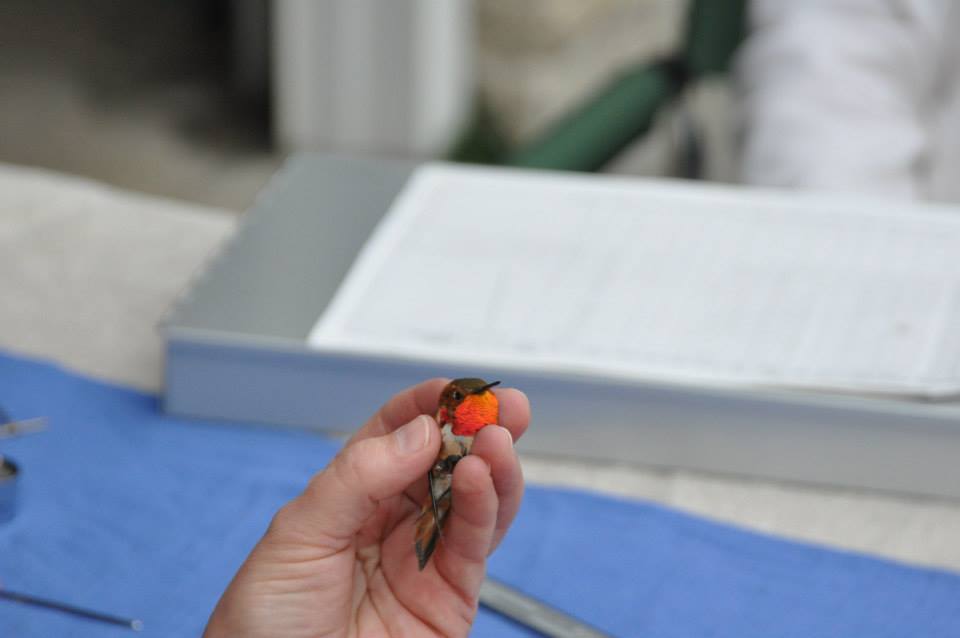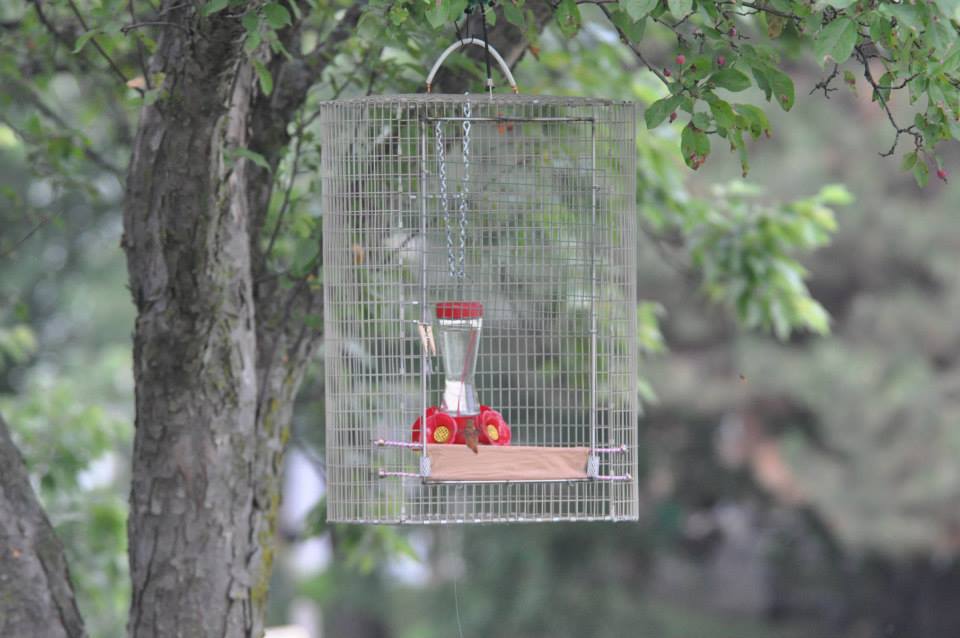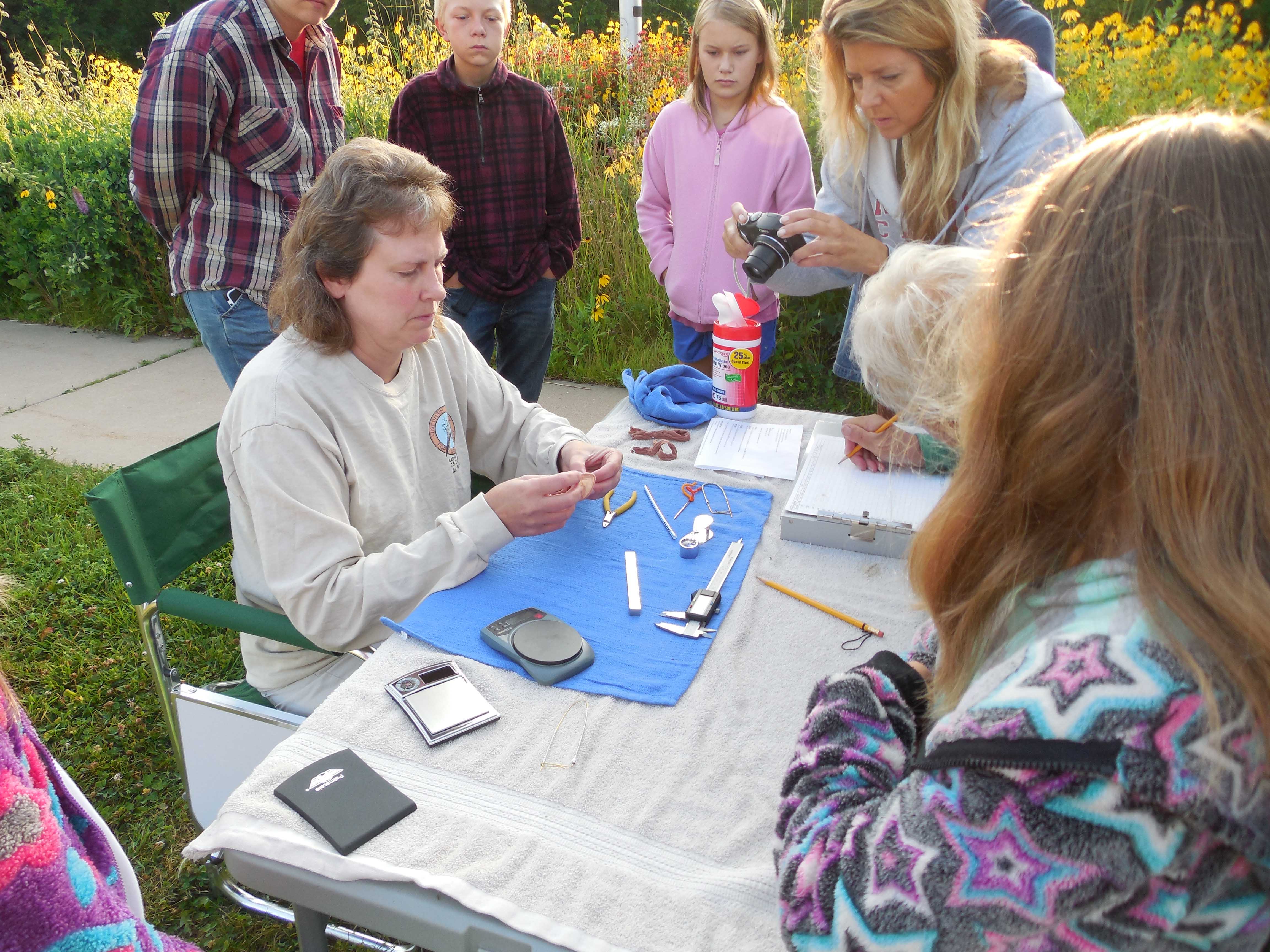From Aug. 17-25, 2014, a stunning adult male Rufous Hummingbird (Selasphorus rufus) made its appearance in Mayville, WI. During the fall and winter of 2014, at least five more were observed in the state. Individuals were observed in Black Earth Oct. 25-27, in Waukesha County Oct. 2–Nov. 5, in Manitowoc Nov. 1-27, in Milton on Oct. 17-25, and in Ft. Atkinson Oct. 15-23.
Rufous Hummingbirds are long distance migrants, and over the last several decades, this powerhouse of a species is passing through Wisconsin with some regularity each fall and winter. Rufous Hummingbirds typically spend their winters in Mexico, but increasingly are overwintering in the southern United States. In spring, they start their multi-leg journey north and eventually arrive as far north as southern Alaska. According to Bird Conservation, some of these legs include traveling “as many as 650 miles before stopping to gorge on nectar and small insects.” They can rest for as long as two weeks between these flight segments. Once they reach their breeding grounds, they have traveled more than 2,600 miles! In proportion to its size, the Rufous’ migration is the longest in the world.
The species’ estimated population is 6.5 million. Since the 1960s, however, the North American Breeding Bird Survey shows their numbers have been declining. Audubon states that their population has declined 60% since 1967. Some research suggests that less connected, and smaller nectar corridors are responsible for the population decline, but more study is needed.
Curiously, a number of these birds are deviating from their “traditional” migration routes, and have been doing so for quite some time. The National Wildlife Federation says the first Rufous found east of the Mississippi River was collected by the Charleston Museum in 1904. For some time, these individuals were deemed “lost,” and disregarded as being fated to die. But ornithologists and citizen-scientists are now taking a closer look at the travels of this western hummingbird. With hundreds of sightings from Minnesota to the eastern seaboard, and south to Florida, some question whether a new migration route is being established or if this is a historical route that, with an increased numbers of observers, we simply are seeing more birds reported.

In our efforts to “keep common species common,” it is important to understand the migration and wintering behaviors of the Rufous Hummingbird. Although eBird data
Among other misperceptions is the idea that if a bird is banded, it will immediately leave the area. In reality, if a migrating species is banded, it will simply depart when it is ready to do so. This is confirmed by recapture data and knowledge of how long birds have remained at sites after being banded.provides useful information on bird distribution, bird banding data allows researchers to track the movements of individual birds. Last year, Wisconsin received notification of its first Rufous Hummingbird recapture. An adult female was banded Oct. 19, 2014, in Ft. Atkinson and then recaptured in New Bern, North Carolina on Nov. 22, more than 1,000 miles away! The bird appeared at a nectar feeder in New Bern on Nov. 15, where she promptly chased another Rufous away. Evidently, migrating through Wisconsin isn’t a death sentence!
Another misconception is that these individuals are vagrants and should be “rescued” and “relocated.” Unless an individual bird is found injured or is unable to fly, it is illegal to capture and relocate any protected species under the Migratory Bird Treaty Act. These birds do not require “rescuing,” but that doesn’t mean a generous homeowner can’t offer a little assistance!
Homeowners who host a wintering hummingbird have their work cut out for them as these birds may visit their yard for a day, several days, or even weeks. Offering a steady supply of nectar and leaving perennials standing, will provide much needed sustenance. Although perennials no longer have flowers, they still harbor insect life. Hummers are masters at finding dormant insects that manage to survive the winter and also can locate sites where sapsuckers have drilled and feed on insects that became trapped.
While it is hard to imagine how a hummingbird can survive in the cold and snow, the Rufous is one species that is incredibly cold tolerant, due in part to its ability to enter into torpor. During this deep sleep, heart and breathing rates lower significantly, and the metabolic rate drops drastically along with body temperature. This allows them to conserve vital energy. As a hummingbird awakens from torpor, heart and breathing rates will increase, and through shivering (vibrating the wing muscles), heat is generated and the blood supply warms.
Examples of long-stay Rufous can be found in the archives of the WSO Records Committee at www.wsobirds.org. In 2012, a Rufous stayed in Columbia County from Nov. 10 to Dec. 21, and another individual remained in La Crosse from Nov. 3 to Dec. 23. And in 2013, one remained in Waukesha from mid-October to Jan. 1.
WSO Board member Mickey O’Conner, who works as an avian zookeeper at the Milwaukee County Zoo, is one of only 150 hummingbird banders in the U.S. In 2014, she banded 237 hummers to track their age, health and migration.
 Many thanks to all the hummingbird hosts for providing a haven for the migrating hummingbirds and for allowing the birds to be banded. The data collected through our banding efforts will help us further understand the migration routes and phenology of Wisconsin’s late season hummers.
Many thanks to all the hummingbird hosts for providing a haven for the migrating hummingbirds and for allowing the birds to be banded. The data collected through our banding efforts will help us further understand the migration routes and phenology of Wisconsin’s late season hummers.
Should you choose to feed a late hummer, information can be found at the Hummer/Bander Research Collaborative website http://hbrcnet.org

